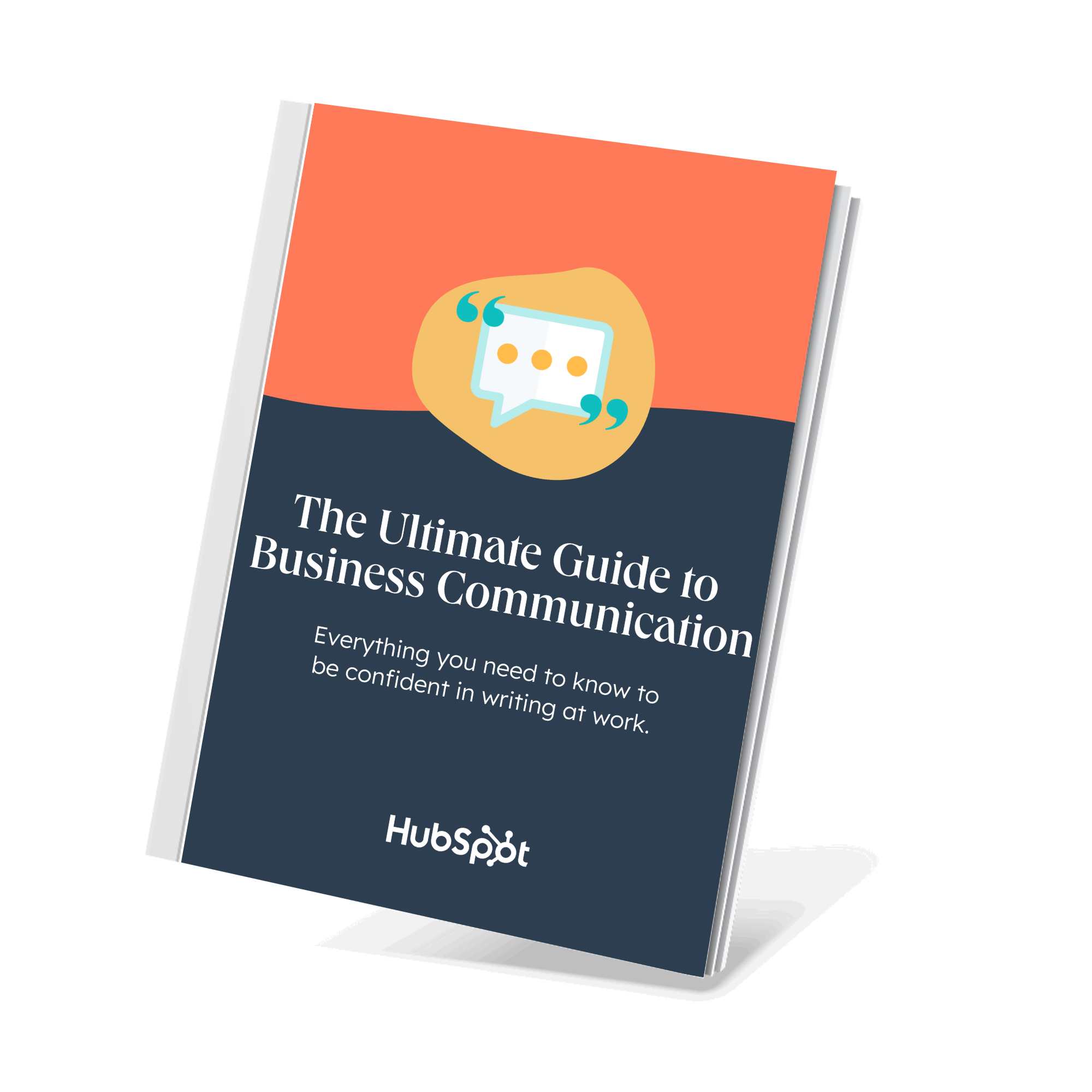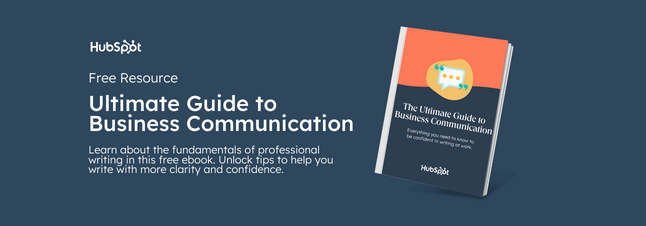If you're an abuser of "I hope all is well," or "Hope you are doing well," these different -- and better -- ways to say it.
"Hope You Are Doing Well"
"Hope you are doing well" and "I hope all is well" are two of the most commonly-used email opening lines there are, so it stands to reason that varying your approach when sending out sales emails will make your messages more memorable and less formulaic. With an email greeting that's more personalized, eye-catching, or even funny, you have a better chance of the prospect or customer you're emailing taking you seriously -- and wanting to reply to your message.
A personalized subject line can go a long way towards encouraging your recipients to open your email in the first place. In fact, 47% of email recipients open an email based on the subject line alone, and 69% of email recipients report email as spam based solely on the subject line.
Additionally, you'll want to keep your emails as short as possible. Boomerang found the sweet spot for email length is between 50-125 words, all of which yielded response rates above 50%.
To that end, here's our list of alternatives that will make your email less vague, more personal, and -- hopefully -- endear yourself to the recipient enough to get a reply.
"Hope All Is Well" Alternatives
- "I hope this email finds you well."
- "I hope you're having an A+ [week, month]."
- "I hope you're having a two-coffee (versus a four-coffee) day."
- "Anything exciting happening in [prospect name] land?"
- "What's the latest in your world?"
- "Are you excited for [upcoming event]?"
- "I hope you enjoyed [industry event]."
- "I hope your iced coffee is as cold as your leads are hot."
- "I just met you, and this is crazy. But here's my meetings link: [Meetings Link]. So call me maybe?"
- "I hope your spirits are as high as your churn rates are low."
- "I hope everything's groovy at [company name]."
- "How are you holding up in the [summer heat, winter cold, this weather]?"
- "I request the highest of fives."
- "I hope your weekend was relaxing (and the transition into Monday wasn't too rough)."
- "I hope [Last Page Seen] was helpful."
- "Great [blog post, LinkedIn comment, podcast episode, interview] -- I learned [fact]."
- "Traveled anywhere fun lately?"
- "How's life in [Office Location]?"
- "I hope you've been getting better weather in [Office Location] than we've been getting in [rep's region]."
- "I hope the X project you mentioned [is off to a good start, is coming along well, is getting great results, was a success]."
- "I'm reaching out because ... "
- "Watching any good shows?"
- "I wanted to start by telling you how impressed I was with [insert recent interaction]."
- "Hope you're hanging in there. Sending good vibes your way!"
- "Is there anything worse than coming back from a long weekend?"
- "Any good plans for the weekend?"
1. "I hope this email finds you well."
If you're the formal type, this email opening is respectful and varied enough to distinguish your message from the deluge of other sales pitches in their inbox. If you're reaching out to a prospect for the first time and aren't certain of the right tone to strike, you can't go wrong with this opening line.
2. "I hope you're having an A+ [week, month]."
Although this sentiment is basically the same as "I hope you're well," it's unexpected -- which makes it feel more authentic.
3. "I hope you're having a two-coffee (versus a four-coffee) day."
Your prospect will definitely know what you're talking about.
4. "Anything exciting happening in [prospect name] land?"
If you're reaching out to someone you know fairly well and/or works in a fairly informal industry, take this opener for a spin.
5. "What's the latest in your world?"
A variation on #4.

6. "Are you excited for [upcoming event]?"
Depending on how familiar you are with the buyer -- and how information they include on their social media -- you can either make this question personal or professional.
For instance, if they just tweeted about Game of Thrones, you might write, "Are you excited for the next GoT episode? #WinterIsHere."
If you learned via their website that their company is hosting a conference, you could ask, "Are you looking forward to INBOUND 2019?"
7. "I hope you enjoyed [industry event]."
Connecting with the attendees of an event? Immediately establish your purpose so they know this isn't a cold email.
8. "I hope your iced coffee is as cold as your leads are hot."
Use this humorous one with a marketer or salesperson.
9. "I just met you, and this is crazy. But here's my meetings link: [Meetings Link]. So call me maybe?"
Show your personality and sense of humor with this musically-inspired call-to-action.
10. "I hope your spirits are high and your churn rates are low."
This lighthearted opener works well for prospects selling subscription products. Adapt it to other audiences by switching "churn rates" with one of these options:
- Refund rate
- Marketing costs
- Customer Acquisition Cost (CAC)
- Cancellation rate
- Defects rate
11. "I hope everything's groovy at [company name]."
Transform the "hope you're well" line by adding some customization and a ‘70s spin.
12. "How are you holding up in the [summer heat, winter cold, this weather]?"
This line works with virtually everyone. Just remember to change it once per season.
13. "I request the highest of fives."
Whether your prospect is a How I Met Your Mother fan or not, they'll smile at this cheery opening line. I recommend using it in congratulatory emails (and including this gif!).
14. "I hope your weekend was relaxing (and the transition into Monday wasn't too rough)."
Appeal to your prospect's love for the weekend.
15. "I hope [Last Page Seen] was helpful."
I love this opening line. Referring to the last page on your website that your prospect saw gives you credibility and opens up the door for a conversation about the content on that page. It's also easy to automate, since "Last Page Seen" is one of HubSpot's default contact properties.
16. "Great [blog post, LinkedIn comment, podcast episode, interview] -- I learned [fact]."
A little flattery never hurts. If you want to start the relationship on a high note, find something notable your prospect recently produced, contributed to, or did and compliment them on it.
17. "Traveled anywhere fun lately?"
When you're reconnecting with someone you haven't spoken to in a few months, try this question to kick things off again.
18. "How's life in [Office Location]?"
To show you've put some effort into your message, try this question. If "Office Location" is one of the fields in your CRM, use a personalization token to automatically update the email with your prospect's city.
19. "I hope you've been getting better weather in [Office Location] than we've been getting in [rep's region]."
A combination of #11 and #17.
20. "I hope the X project you mentioned [is off to a good start, is coming along well, is getting great results, was a success]."
Prove you care about your prospect's work -- and pay attention when they talk -- by mentioning one of their ongoing initiatives.

21. "I'm reaching out because … "
It might feel strange at first to launch into your message with no preamble, but trust me: You won't seem rude. In fact, most prospects will appreciate your brevity.
You can make this even more straightforward by simply stating your purpose.
For example, rather than saying, "I'm reaching out to offer some advice on your homepage design," you might write, "Can I offer some advice on your homepage design?"
The first line of your email can compel the recipient to keep reading -- or prompt them to move on. With these alternatives, the former is more likely.
22. "Watching any good shows?"
Everyone's got that one show they're binging at the moment. Build instant rapport -- and maybe even find your next Netflix obsession --with this easy opener.
23. "I wanted to start by telling you how impressed I was with [insert recent interaction]."
Did they make a great point in your pitch? Or maybe they wrangled a chatty colleague in your presentation? When your champion does something impressive, start your next email by telling them how much you admired their handling of the situation.
24. "Hope you're hanging in there. Sending good vibes your way!"
When you know your prospect is facing a tough week, a big deadline, or a difficult task, make sure they know you're there for them.
A note of encouragement (no strings attached) can go a long way in building a strong working relationship and giving you an edge over competitors.
25. "Is there anything worse than coming back from a long weekend?"
There really isn't. Reach out to sluggish prospects after a long weekend or holiday with a reminder you're right there with them.
Plus, your email will likely arrive before they've jumped into any large tasks, meaning your chances of receiving a timely response skyrocket.
26. "Any good plans for the weekend?"
Conversational email openers like this are begging for a response. Sending this email on a Monday? Try a tongue-in-cheek approach by adding, "It's never too early to start planning, right?"
Sending exciting emails is a great way to set yourself apart from competitors. Give your prospects something to look forward to responding to when you try these email openers.
Next, read our list of "thank you in advance" alternatives.
Sales Communication


.png)



![Active Listening Techniques To Use On Your Next Sales Call [+ Examples]](https://53.fs1.hubspotusercontent-na1.net/hubfs/53/active-listening-1-20250218-4164086.webp)
![How to Reply to a Sales Rejection Email From a Client [+ Templates]](https://53.fs1.hubspotusercontent-na1.net/hubfs/53/timing-objection-responses-1.jpg)




%20(1).png)

